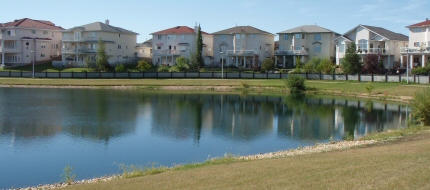Midges (family Chironomidae) are small, non-biting flies that look a lot like mosquitoes. These insects can be found almost anywhere. There are about 670 species of midges in our part of the world.
The larvae of most midges are aquatic, living in tubes or cases in the bottoms of lakes and residential ponds. Many of these larvae are scavengers or feed on algae or other aquatic plants. Midge larva are often very abundant and are an important food source for many other animals.
Emerging adults usually swarm late in the day to mate. The adults do not feed and live for only 3 to 5 days.
Some midge larvae are known as bloodworms. Their unusual red colour is due to haemoglobin (respiratory blood pigment) that allows them to live in water with very low oxygen levels.
The Problem
Midges often occur in huge swarms, usually in the evening, especially in Edmonton's lakeside communities. Although the insects are harmless, large numbers of them can be annoying and can cause concern to homeowners as they are commonly mistaken for clouds of mosquitoes.

Edmonton's stormwater lakes can produce large midge populations.
What You Can Do
Minimize the use of outdoor lighting around your home to help reduce their presence in your yard. Yellow light bulbs in outdoor fixtures are less attractive to insects.
Keep doors closed and windows tightly screened to prevent midges from entering your home.

